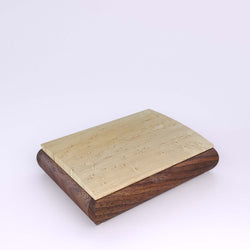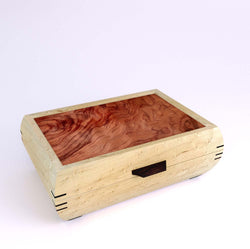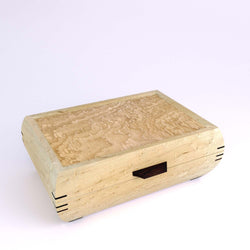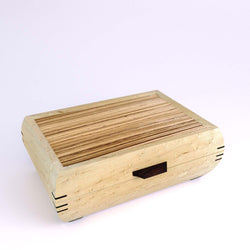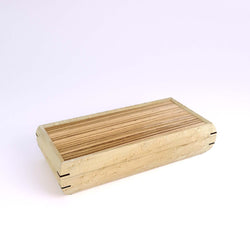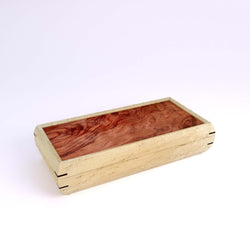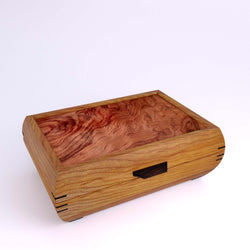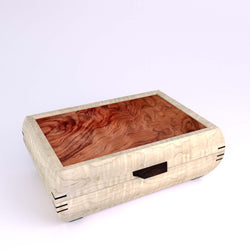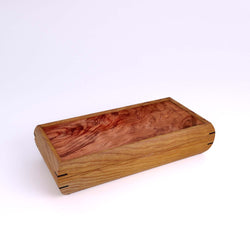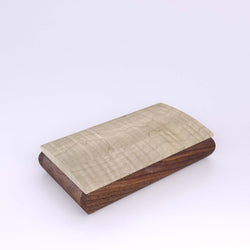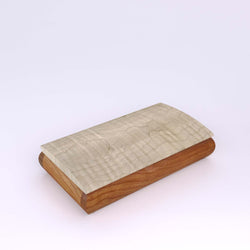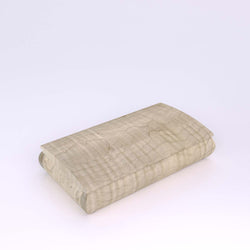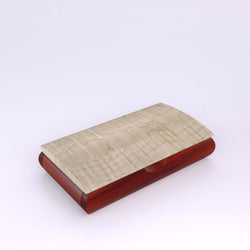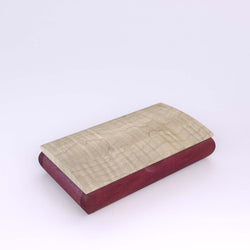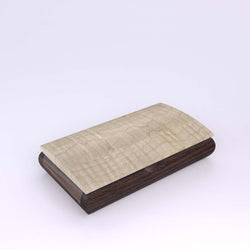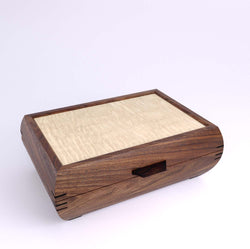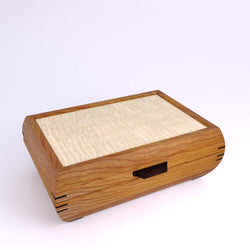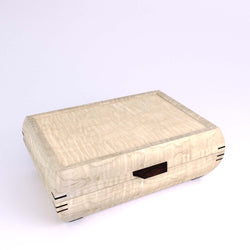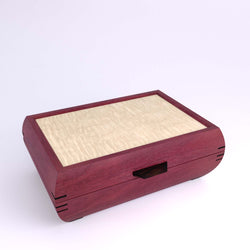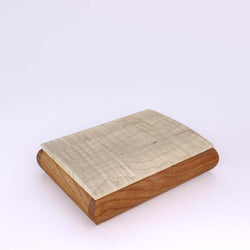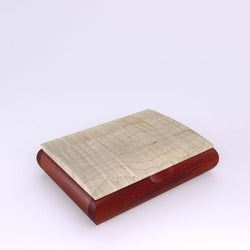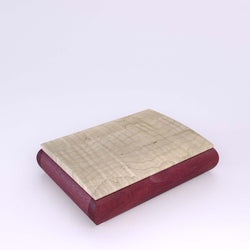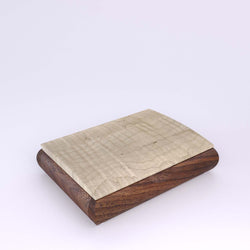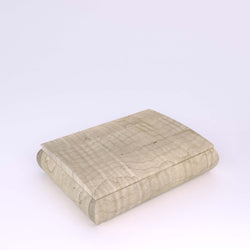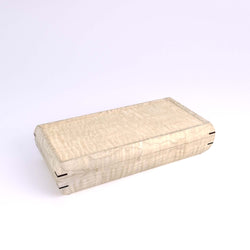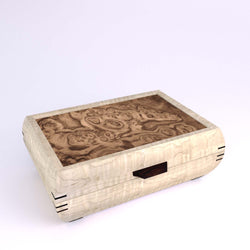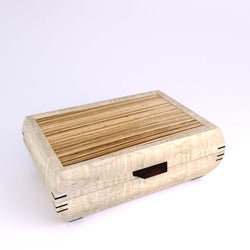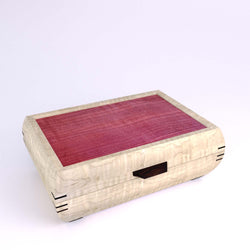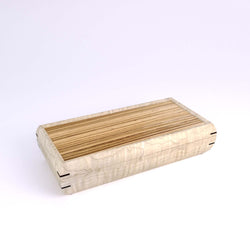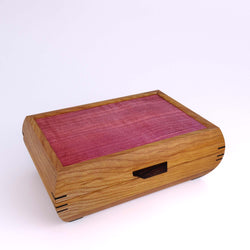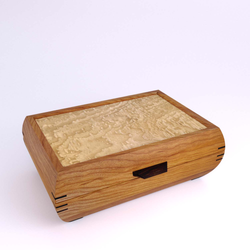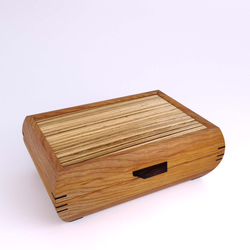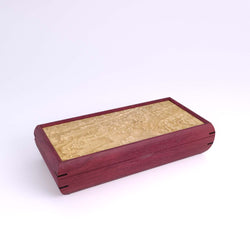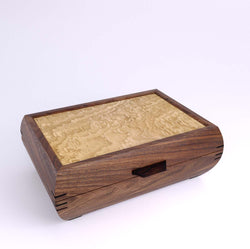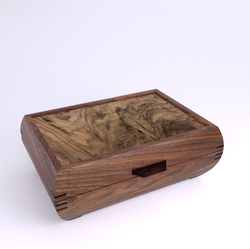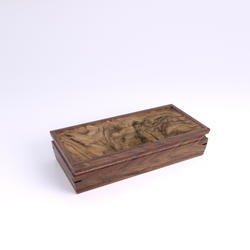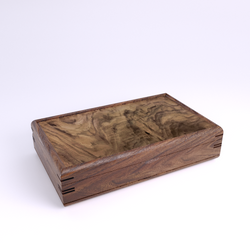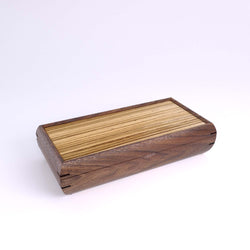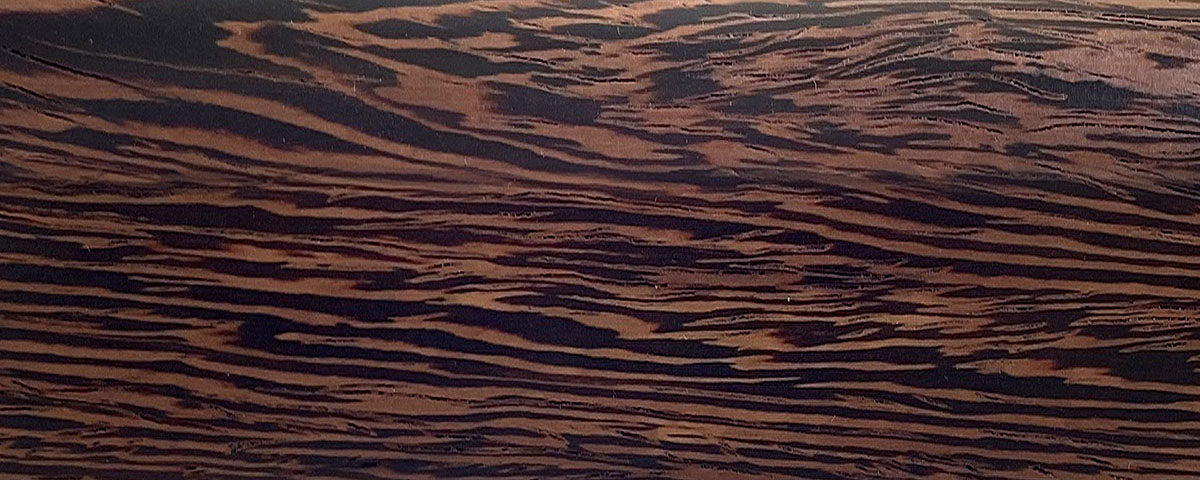Wood Lookbook
Meet the wood we're working with to make your Jewelry Box unique

Our Wood and the Environment
Just like people, snowflakes and stars, no two trees are exactly alike. This is what makes every single Mikutowski Woodworking jewelry box, keepsake piece and desk item unique!
Wood is intrinsically warm and unique. Variations in wood color and grain will naturally occur.
We, here at Mikutowski Woodworking embrace this to the fullest and never stain the wood. Only a water based and eco friendly coat is applied to bring out the woods’ natural beauty and protect it. We also care about the environment and where our wood comes from.
All of the wood we purchase is sustainably sourced. Small pieces of “scrap” are used in detail work and smaller items. Any remaining wood is donated to area schools, other artisans, and elderly care service programs.
Want to learn some fun facts about each species?
Birdseye Maple Jewelry Boxes
Birdseye maple is one of the favorites at Mikutowski Woodworking. It is not only rare, as it is only found in about 1% of hard maple, but it is also native to our region. Furthermore it cannot be cultured or intentionally reproduced. This mystical wood, often referred to as the “Pearl” in the shop, always has us oohing.
Bubinga Jewelry Boxes
If it’s quirky name doesn’t get you, it’s unique characteristics will. Known for its strength and beauty, Bubinga is one of the most popular exotic hardwoods we sell. Luxury car makers even use this opulent wood as interior trim in their high end models. While it can be a challenge to work with, it is more a joy as the heartwood ranges from pinkish red to dark reddish brown with black streaks, making every piece truly one of a kind.
Curly Maple Jewelry Boxes
Curly maple, like Birdseye maple, is not a species of tree but rather describes the figure found within a maple tree. This domestic hardwood is also referred to as “Tiger maple” due to the figure resembling tiger stripes. Lusted after many due to its 3-dimensional look and variations in color. While it is typically almost white in color, our favorite pieces have the gray, unique streaks running through it.
Quilted Maple Jewelry Boxes
At Mikutowski Woodworking, we only use Quilted maple for the lids of our large and medium jewelry boxes. This is because it is best showcased when flat sawn. The remarkable figure creates a maze of unique patterns, often appearing wavy, mirroring the ripples on water over a sandbar.
Canarywood Jewelry Boxes
Canarywood is one of the most fun exotic species we work with at the shop! It has an amazingly recognizable sweet scent. Its unique color and grain, from a pale yellow-orange to a darker reddish brown with darker brown or red streaks throughout, seem to magically emerge as each board is worked. Each board truly is unique!
Cherry Jewelry Boxes
One of the most popular domestic species used by American woodworkers, Cherry is described as having the ideal balance of workability and strength. While often people are used to Cherry being a dark reddish brown, the Cherry we use is left in its wonderfully natural state (remember we don’t stain our jewelry boxes ).
Padauk Jewelry Boxes
Another wood that is known for its sweet aroma and distinctive color. Padauk offers a striking contrast to most wood species. Its vivid orange color is a statement. Be careful with exposing this wood to UV light as over time it will turn that striking color into more of a dark brown.
Purpleheart Jewelry Boxes
No, this is not stained. Yes, this wood is really purple! Not for the wallflowers, Purpleheart definitely makes a bold statement. Only a limited number of our large jewelry boxes are made each year in Purpleheart, so make sure you get yours while you can. While it’s very dense, hard and difficult to work with, Purpleheart is certainly rewarding as it requires a delicate touch from our woodworkers.
Rosewood Jewelry Boxes
One of the most sought after exoctic wood species, Rosewood is the most expensive hardwood we purchase. It is known for its varying warm brown tones and dark ribbon like streaks. Every piece of Rosewood is truly unique and what makes it so special to work with. While many species of Rosewood have been over harvested, we are currently working with Bolivian Rosewood which serves as a wonderful substitute to Brazilian Rosewood which has been over harvested, endangered and is now on the CITES Appendices.
Shedua Jewelry Boxes
You can always tell when you are working with Shedua as it has the aroma you can find in a horse barn! Despite its “bouquet”, we are drawn in by the greenish brown coloring and natural luster, plus once finished the smell dissipates.
Walnut Jewelry Boxes
Walnut is always a hot discussion at our shop - is it brown or gray? While it is a brown wood, it is a cool brown making it appear gray when compared to the other warm wood tones throughout the shop. Often Walnut is stained to a more warm red brown color, of course we leave it in its natural state, unstained and clear coated. This domestic hardwood is found in our region and in fact is the only native dark wood found in North America.
Wenge Jewelry Boxes
Wenge, while a super lovely deep chocolate brown wood, is not so lovely to work with as it causes the most bandage usage at our shop (splinters, splinters and more splinters). Yet, we will continue to bear with all those splinters to provide a superior product. We use Wenge throughout our line for handles, feet, splines and accents. Recently we started using it on our large and medium jewelry boxes, but grab them fast as we only make a handful of them every year.
Tamo Ash Jewelry Boxes
Used only as lids for our large and medium jewelry boxes, Tamo ash is known for its wild peanut-like figuring. Although this description doesn’t effectively describe its beauty. Even pictures have a hard time doing it justice as the iridescence and dimensionality is hard to capture. This is definitely a luxury wood, it is even offered as an upgrade in Bentleys.
Zebrawood Jewelry Boxes
Another species that has a “horse barn” scent that we can’t resist due to its unique physical appearance. It features an exciting alternating color pattern, typical of the stripes on a zebra. We particularly love the loud contrast of Zebrawood paired with milder grained wood species. We also love pairing it with brightly colored wood to accentuate the uniqueness. We never make full boxes out of Zebrawood as it is not found in large enough pieces but it is used for lids and accent pieces.




